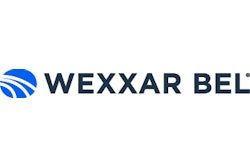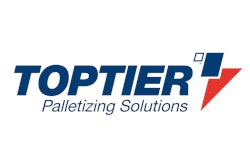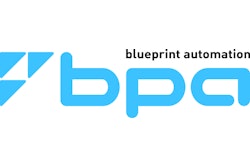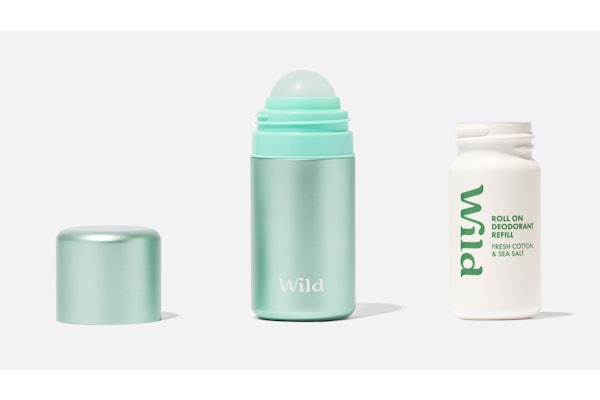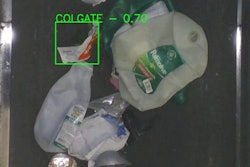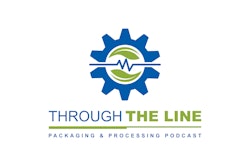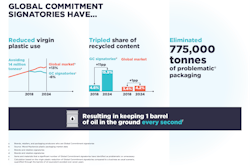Issaquah, WA-based Costco Wholesale Corp. continued a do-it-yourself approach to private-label packaging when the club-store chain installed a line last summer at its newly expanded East Coast packaging facility in Monroe Township, NJ. This is the same facility— though now 154,000-sq-ft larger—that we visited in fall 2006 (see Costco unboxed). At that time, we reported on Costco’s production of its Kirkland Borghese cosmetics in carded packs including blisters that Costco thermoforms on-site.
This time, Costco is taking snack packaging in-house, using a flexible film format: An 8-in.-tall, 2.5-in.-wide tube that yields a 57-g (2-oz) net-weight package. The package format as well as the integrated, highly automated line that produces it at speeds above 300 tube packs/min are said by Costco’s Scott Carnie to be flexible enough to handle any combination of nuts, dried fruit, and jellybeans. Carnie is general manager of the facility.
Equally flexible are the complex production operations: an integrated line designed to pack three different products simultaneously while managing and controlling each pack at rates in excess of 100 tubes/min. The three varieties are collated using robots and are tracked through the operations to produce a 24-count “rainbow” pack under Costco’s Kirkland branding.
The line possesses such a speedy and efficient throughput capability that, by the time the last pallet of incoming raw goods is removed from a truck, the first pallet load of finished goods can be loaded on that same truck, according to Carnie. The operation is both remarkable and unexpected:
• Remarkably, the three different products convey together sequentially on a single main product conveyor to a box-loading station “manned” by a robot.
• Unexpectedly, the robot picks up the tube-packs four at a time to properly fill the box over six rapid iterations. Plus there are three other robots ahead of that one.
A strategic line
There’s an overarching strategy at play here behind the tube fillers, robots, and other machines on the line: By eliminating the middleman—a private-label packager—Costco takes strict control of the product, its packaging, and its margins.
The day of our visit, Costco packaged a combination of cashews, almonds, and peanuts in 2-oz tubes into a “Variety Snacking Nuts” 24-count box that contains eight tubes of each nut. Each nut variety is packaged separately by one of three Model B108 intermittent-motion vertical form/fill/seal machines from Triangle Package Machinery (www.trianglepackage.com).
Upstream of the Triangles is an elaborate, large-scale dedicated infeed system for each f/f/s machine. Currently, product arrives in bag-in-boxes that are manually unloaded into one of three side-by-side, 500-lb capacity infeed hoppers. That will change by early 2009, when raw product can be supplied using “super sacks,” woven bulk bags holding 2,000 lb of product. Plant manager Frank Colon says they were awaiting the arrival of film liners for the super sacks, permitting Costco to discard the cheap liners and reuse the sacks. The super sacks will be hoisted using cranes at each hopper.
Besides handling three different products simultaneously, the system can also package the same product, adds Colon. A mixing conveyor provides a fourth infeed point. It permits products to be mixed on-site, such as fruit and nut mixes, for custom blends for trail mix or similar products, notes Colon. In fact, Costco plans to package trail mix in January, he adds.
Product from the conical-bottom hoppers is lifted by 20-ft.-long Cablevey (www.cablevey.com) systems--tubular drag conveyors with an observation/view/sight tube--that “provide a consistent flow,” Colon says. “It’s a simple, easy-to-clean system.” The nuts are discharged onto a vibratory feeder supplying a 14-head Yamato (www.yamato-scale.co.jp) Model AWD314 computerized netweigher atop each f/f/s machine.
The weigh scale and f/f/s combination operates to 120 packs/min/machine. According to Triangle, at this speed, there’s just a 30-millisecond gap between packs. The weighers, accessible from a mezzanine about 12 ft above floor level, provide greater than a 99% fill accuracy, Colon says. That’s about 1⁄2 g on each 57-g tube-pack.
The Triangles use Allen-Bradley ControlLogix software from Rockwell Automation (www.rockwellautomation.com).
Costco was familiar with Triangle, having used its f/f/s baggers on an “all chocolate” line also located nearby within this same packaging area. Costco had assessed three machinery vendors and decided on Triangle after it guaranteed a rate of 60 bags/min for that line. That’s a high throughput when you consider that, depending on the product run, those bags weigh 5 or 7 lb each. The accuracy of the Yamato scales clinched the choice for the pairing, notes Colon, and provided a confident choice for this new line.
Triangle Model B108 units offer:
• Online troubleshooting via modem
• A patented, 16-sided forming tube for fast, no-tool changes
• An open design for easy maintenance
• A self-aligning, vacuum-belt film advance
• A convenient data port
The fillers are equipped with a Markem (www.markem.com) SmartDate 5 contact coder—standard on all the plant’s vertical baggers, Colon says—that marks the film web. A Mettler-Toledo Safeline (www.safeline.com) throat-style metal detector checks product as it passes down through the filler.
Costco’s Triangles have a reverse discharge in which the takeaway conveyor is oriented 180º from the normal direction. Thus, the packs are released not out the front, as is typical, but slide directly out toward the back of the machine. This was a simple orientation step to keep the tube-packs oriented face up-with the seal at the back—for proper pickup by the robots located downstream, Costco says.
In addition to the 2-oz tubes, the Triangles can also produce packs up to 8 x 14 in. and holding up to 3.5 lb of product. Costco's current plans are for tube-pack weights from 1 to 3.5 oz.
The tubes discharge from the Triangles onto a reverse J-shaped takeaway conveyor that angles sharply beneath the unit before it gets to the filler’s back left leg to direct the tubes beneath a delta-style robotic pick-and-place unit from the Blueprint Robotics division of Blueprint Automation (www.blueprintautomation.com). The robot’s end effector, equipped with two suction cups, picks up the tube packs one at a time. The end effector then rotates each tube 90 deg to place it into a flight onto a main conveyor that’s oriented at a right angle to the takeaway conveyor.
Each of three robots places its tube-pack sequentially into every third conveyor flight to load the conveyor with a 1-2-3 series of nuts, in this case peanuts-almonds-cashews.
Colon points out that a short stretch of auxiliary accumulation conveyor in front of each robot was set to be activated the week after our late October visit. It provides about a 20-second buffer to balance the output for each robot to accommodate any differences in product flow. Without it, the inflow to each of the three robots needs to be essentially the same.
“That way, production can continue to run while the robots get back in synch,” Colon explains. That should permit the line to run near 360 tube packs/min rather than at the current rate of 300/min, he adds.
The robots operate without any vision system, instead relying on an encoder and logic and line control handled through a programmable logic controller from Rockwell.
The tubes continue conveying past a standard Ipak Machinery (www.ipakmachinery.com) Model TF-200Q automatic tray former. Box blanks are erected and glued and then formed on a mandrel on the compact unit.
“Our standard is that machinery must yield less than two percent waste, but the Ipak’s scrap rate is under one percent,” comments Colon. The former places the microflute cartons on a conveyor running alongside the product conveyor.
The fourth robot
The parallel product and box conveyors arrive at the carton-loading station, which is run by a fourth Blueprint delta-style robot. As with the other robots, this one is also housed within a plexiglass enclosure for safety and sanitation reasons. Unlike the other robots, it is equipped with a larger end effector so that it can pick up four tubes at a time for loading into the awaiting box. After six iterations, the box is filled and released as the robot begins to load the next box. “We’re also considering an 18-count box,” offers Colon.
Near the robot station’s exit, an operator inspects the open-top boxes for proper count and orientation before they are checkweighed. The boxes continue on to a folder/taper machine from Elliott Manufacturing (www.elliott-mfg.com) that also has a Domino (www.domino.com) Model A400 ink-jet coder. “We’ve standardized on Domino coders here,” says Colon. The Elliott—the second one installed at the facility—folds over the top flap and tapes it closed before releasing the box to a Shanklin (www.shanklincorp.com) overwrapper. “It works great,” says Colon. “We have Shanklins on all five of our lines.”
The boxes pass through a heat tunnel to shrink the clear, unprinted film tightly around each box. The boxes, mechanically tipped onto their sides ahead of shrink wrapping, are uprighted after the Shanklin. The boxes are conveyed from the packaging room to a dedicated TopTier (www.toptier.com) machine, which integrates palletizing and stretch wrapping in a compact footprint. “TopTiers are on all our lines,” notes Colon. “It’s a lot more efficient than having separate palletizing and stretch-wrapping operations.” It produces about five pallets/hr.
Colon acknowledges that the startup of this line was especially complicated because of the number of different vendors involved.
What’s ahead for its East Coast packaging operation is anyone’s guess, especially outside of Costco, but there is another 83,000 sq ft of space available on-site. Time will tell if Costco makes further inroads into do-it-yourself, as it reshapes the chain’s landscape for private-label packaging.















